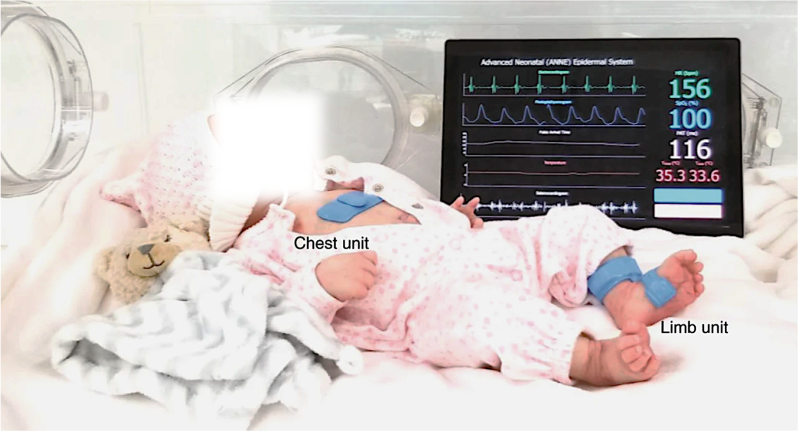Flexible, Thin-Film Biosensors

We like to keep a pulse on the latest biosensor research going on around the world. One class of biosensors that have really caught our attention is the so-called thin-film sensors, pioneered by the Rogers Research Group at Northwestern University.
We’re no strangers to the flexible PCB here at Hackaday. Flexible PCBs have become increasingly accessible to small-scale developers and hobbyists, explaining why we’re seeing them incorporated into many academic research projects. The benefit of these types of sensors lies in the similarity of their mechanical properties to those of human skin. Human skin is flexible, so matching the flexibility of skin allows these thin-film sensors to adhere more comfortably and naturally to a person’s body.
The circuits used in these thin-film sensors are what we’ve grown accustomed to. An instrumentation amplifier to measure heart rate (and oftentimes respiratory rate) from the electrocardiogram, a light-emitting diode, and photosensor pair to measure heart rate, respiration, and blood oxygen from the photoplethysmograph, a thermistor or non-contact infrared sensor to measure temperature, and an accelerometer to measure activity. Really the beauty behind what the Rogers group has done lies in their flexible PCB design. They’re strategically using serpentine interconnects between modular components of the PCB, allowing the circuit to bend and fold in predetermined locations. All that’s left is some good low-modulus silicone to cover the electronics and give the device a nice, soft-to-touch surface, adding to the comfort level of the user.
Really, this strategy is no different than what we’ve explored here at Hackaday, and we’re happy to see others finding utility in flexible PCBs as well, especially for medical applications. We like to think that maybe the Rogers group has been inspired by the many creative projects that have graced the front page of Hackaday and hope that you are inspired to keep on hacking as well.
Post a Comment